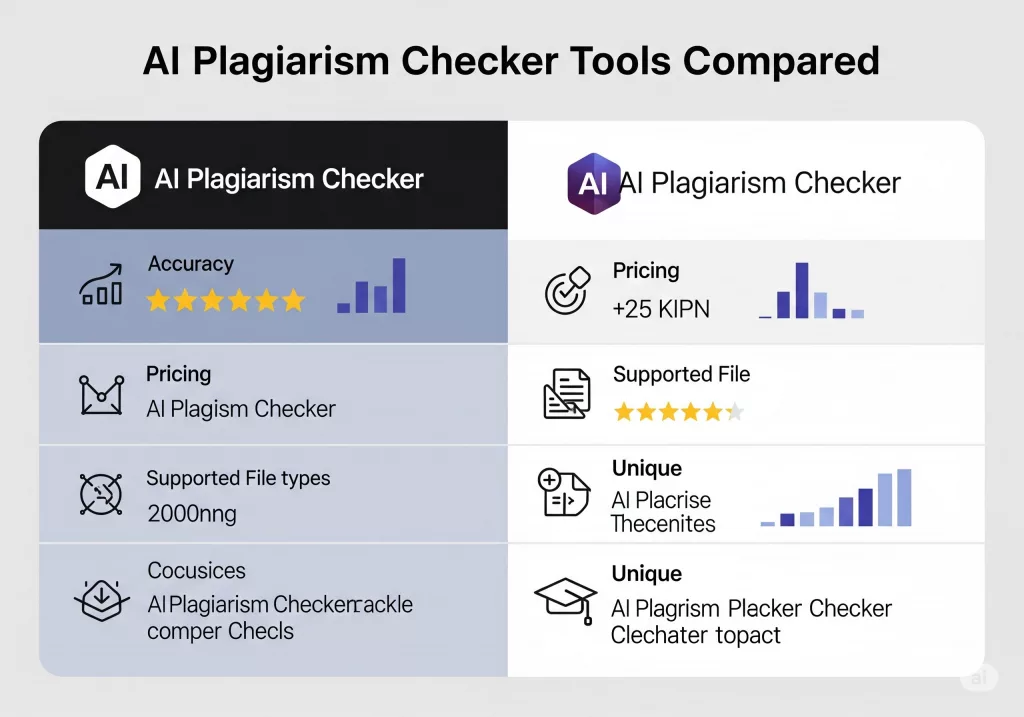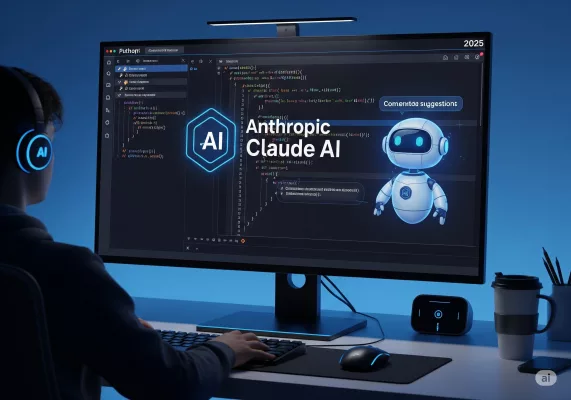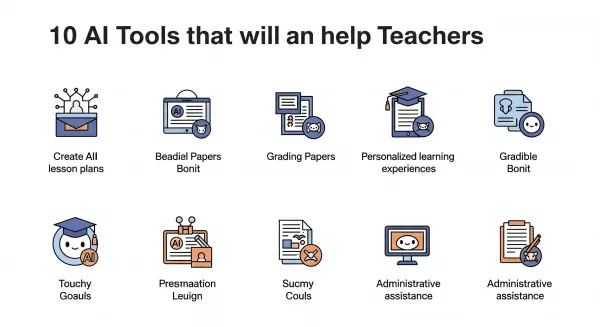Plagiarism detection used to be simple. You ran a paper through Turnitin or Grammarly, got a percentage score, and moved on. Yet, the emergence of AI-generated content has entirely altered the game by blocking the internet with such materials.
Whether an amateur student trying to avoid accidental overlap, a blogger worried about Google penalties, or a teacher trying to catch ChatGPT-generated essays, what buys you are the proper tools. These tools are the ones that can spot machine-generated content and pinpoint some paraphrasing and very subtle duplications.
So we went ahead and tested all of them. We took the same AI-generated sample and fed it into every major tool. And here is what really works and what is just a bunch of noise.
What Is an AI Plagiarism Checker?
An AI plagiarism checker is a tool that detects both traditional plagiarism (copied text) and AI-generated writing. It scans your content against online sources, academic databases, and known AI writing patterns to flag anything that looks suspicious.
The best ones do more than just highlight matches—they show you where the content came from, how it was written, and whether it’s likely to trigger penalties from search engines or academic platforms.
Why It Matters in 2025
- Google’s algorithm is smarter: AI-written content that mimics human tone but lacks originality can get buried in search results.
- Academic integrity is under pressure: Students using AI tools need to know what’s considered plagiarism—even if they didn’t copy anything directly.
- Content creators are at risk: Publishing AI-generated articles without checking them first can lead to duplicate content flags and lost rankings.
How We Tested the Tools
We created a 1,000-word blog post using ChatGPT and ran it through each tool. We looked at:
- Detection accuracy
- Source tracking
- AI vs human prediction
- Paraphrasing support
- Free vs paid features
- Speed and usability
Best AI Plagiarism Checker Tools (2025 Edition)
Here’s the breakdown of the top platforms and how they performed.
1.Originality.ai
Best for SEO agencies and academic use
Originality AI is built for content marketers, publishers, and educators. It detects both plagiarism and AI-generated text with high sensitivity.
Features:
- Dual detection (AI + plagiarism)
- Readability and SEO scoring
- Chrome extension
- API access for teams
Pros: ✅ High accuracy ✅ Great for long-form content ✅ Pay-as-you-go pricing
Cons: ❌ Can flag human-written text as AI ❌ Limited academic database coverage
Verdict: If you’re publishing online or managing freelance writers, this is your go-to.
2. CopyLeaks
Best for enterprise and multilingual detection
Copyleaks is trusted by universities and businesses. It supports over 30 languages and offers deep scanning across academic and web sources.
Features:
- AI and plagiarism detection
- LMS and CMS integrations
- Sentence-level analysis
- OCR support for PDFs
Pros: ✅ High accuracy ✅ Great for scanned documents ✅ Developer-friendly API
Cons: ❌ Interface can feel complex ❌ Premium features locked behind paywall
Verdict: Ideal for institutions and teams with diverse content formats.
3. GptZero
Best for educators and fast checks
GPTZero was built for teachers trying to spot AI-written essays. It’s free, fast, and surprisingly accurate for GPT-style content.
Features:
- Sentence-level AI detection
- Perplexity and burstiness scoring
- No login required
- Google Docs integration
Pros: ✅ Free to use ✅ Great for short-form academic writing ✅ Easy to understand results
Cons: ❌ Doesn’t track plagiarism sources ❌ Limited for long documents
Verdict: Perfect for quick classroom checks and casual use.
4. Quillbot
Best for rewriting flagged content
QuillBot is known for its paraphrasing tool, but its plagiarism checker is solid too. It’s great for students and bloggers who want to fix issues on the spot.
Features:
- Plagiarism detection
- Built-in paraphraser
- Grammar and citation tools
- 25,000-word scan limit
Pros: ✅ All-in-one writing assistant ✅ Affordable plans ✅ Easy to use
Cons: ❌ Requires upgrade for full results ❌ Not ideal for academic citations
Verdict: Great for rewriting and polishing AI-generated drafts.
5. Turnitin(via Scribbr)
Best for academic integrity
Turnitin is the gold standard in education. Scribbr partners with Turnitin to offer plagiarism checks for students.
Features:
- Massive academic database
- Citation formatting
- Grammar and style suggestions
- Detailed originality reports
Pros: ✅ Trusted by universities ✅ Deep academic coverage ✅ Clear feedback
Cons: ❌ No free version ❌ Students need institutional access or pay per scan
Verdict: If you’re submitting papers, this is the one professors trust.
6. PrepostSEO
Best free tool with built-in paraphrasing
PrepostSEO offers a generous free plan and includes a paraphraser and AI humanizer. It’s great for students and bloggers on a budget.
Features:
- Plagiarism detection
- Paraphrasing and humanizing tools
- No login required
- 1,000-word limit per scan
Pros: ✅ Free and fast ✅ All-in-one dashboard ✅ No account needed
Cons: ❌ Limited scan size ❌ Ads can clutter the interface
Verdict: Best free option for quick checks and rewrites.
Google Penalties and AI Content
Google doesn’t penalize AI content just for being AI but it does penalize low-quality, duplicate, or spammy content. That means:
- If your AI-generated blog post matches existing web content too closely, you could lose rankings.
- If your site has thin content with no original value, it might get deindexed.
- If you publish AI content without checking for plagiarism, you’re rolling the dice.
Solution: Run your content through a dual AI + plagiarism checker like OriginalityAI or Copyleaks. Rewrite flagged sections. Add personal insights, data, or examples. Make it yours.
How to Choose the Right Tool
Here’s a quick checklist:
| Need | Best Tool |
|---|---|
| Academic papers | Turnitin via Scribbr |
| SEO blog posts | Originality.ai |
| Quick classroom checks | GPTZero |
| Rewriting flagged content | QuillBot |
| Free casual use | PrepostSEO |
| Multilingual detection | Copyleaks |
AI Plagiarism Checkers Are Now Essential
In the year 2025, the word originality is no longer an option-it is a matter of survival. Be it for that school paper, a series of articles for the almighty Google, or a piece of writing for some client, you somehow need to be sure that your content is clean, pure, truthful, and free to be published.
Because plagiarism-checking tools are there not just to catch cheaters. They are created also with the genuine creator in mind. They serve you right-honestly do not let you face penalties, boosts your stature, and allow you to shine amidst a muddy sea of sameness.
Pick your tool. Run your checks. And keep creating content that is not just smart but real.





Leave a Reply